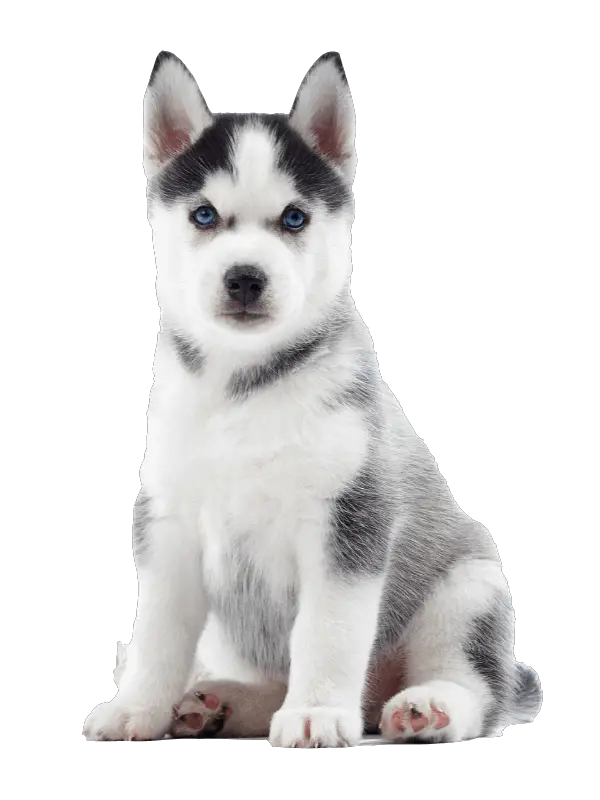It’s no secret that we love our dogs, so when we feed them it is critical to steer clear of foods dogs can’t eat.
Nothing is more heartbreaking than seeing a dog kibble with compromising ingredients and questionable health values.

This article details in full human foods dogs can and cannot eat.
Whether it is allergies, intolerances, or minute chemical ingredients, we want to avoid these dangerous ingredients.
Together we will travel through the canine taste buds and make certain that everything we feed our furry family is safe and healthy.
Human Foods That Your Dog Can Eat
Even though we are both mammals, canines and people have many metabolic differences.
Some are well known (like not feeding dogs chocolate).
Others are less apparent, like trace, dangerous chemicals found in peas.
To keep our pups at optimal health, we must investigate dietary specifics so food can be both tasty and safe.
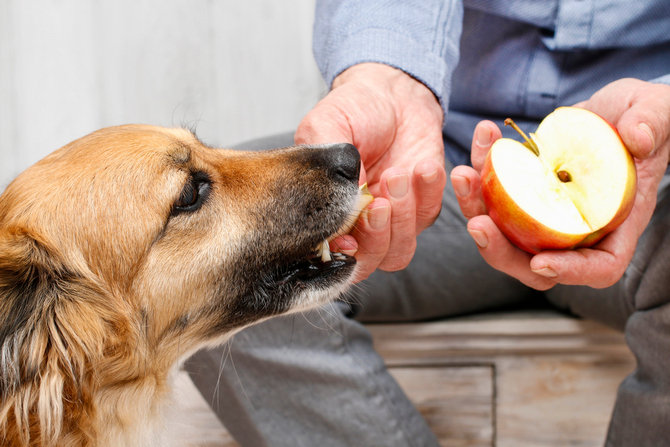 From: PetComments.com
From: PetComments.com
#1 Apple Slices- Pectin and Safe Starch
You can serve this handy food to dogs safely.
Thanks to its high amounts of fibre and Vitamin C, it is a healthy option for our canine companions.
It provides filling pectin and starch, without the drawbacks of glucose/fructose.
Serve this food pureed by mixing it into kibble or wet food.
You may also learn: How To Help Your Dog Gain Weight?
 From: DogCarion.com
From: DogCarion.com
#2 Apricots- A Fur Friendly Puree
As a result of the high fibre count and overall acidity, it is best if you serve these cooked.
We can stew these into kibble or puree them as a sauce.
Since there is trace cyanic acid in the fruit, heat the item for at least six minutes.
Benefits include fibre and vitamin C.
 From: TheSmartCanine.com
From: TheSmartCanine.com
#3 Bananas- B Vitamin Benefits
Depending on how sweet the banana is (and what season you are in), serve this item hot or cold.
On warm days, a frozen banana is a nice sweet treat loaded with B Vitamin benefits.
It will keep your pup hydrated and content during long summer walks.
 From: Dog-Gear.com
From: Dog-Gear.com
#4 Blackberries- Loaded with Antioxidants
Your success feeding this to your canine companion will be their overall pickiness.
If you are looking to sneak these antioxidant-packed morsels into your pup’s diet, consider hiding this great source of vitamins in the kibble.
Be aware, however, that the seeds can sometimes cause digestive irritation.
You may also know: What Dog Food Is Best For Less Pooping?
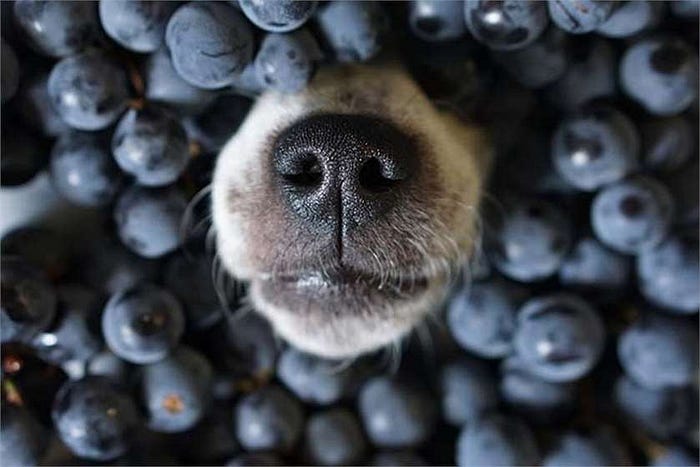 From: Medium.com
From: Medium.com
#5 Blueberry- Bursting With Healthy Sugars
Similar in benefit to the blackberry, these blue kernels of fruit are a very healthy choice for simple-sugar treats.
Be careful, since there is a surprising amount of fructose in these items.
That said, they are excellent treats on hot days (and a great alternative to salty snacks- just make sure to burn off the energy).
#6 Bread- Source of Complex Carbs
Whether we feed our dogs bread is a personal choice.
Some pups are fine with this starchy food.
Others are intolerant to gluten and other wheat ingredients.
Assuming your pup is not allergic, then try feeding this food soaked in gravy.
It will add bulk to their diet and keep them full longer.
 From: HowPup.com
From: HowPup.com
#7 Broccoli- A Great Green Veggie
This crunchy veggie has tonnes of iron and calcium (both great for the canine form).
While pups can eat it, it is not necessarily their favorite food.
Try sneaking it in after cooking the broccoli.
It will dampen the flavor and scent and keep it out of your pup’s mind.
You may also like: What Is The Best Dog Food For Huskies?
#8 Brussels Sprouts- Tiny Powerhouse of Vitamins
These tiny vegetables are actually related to both broccoli and cabbage.
The fibrous benefits (found in the crunchy cell wall) help keep your dog regular.
That said, they hold a pungent odor to the discerning doggy nose.
If you try to incorporate them into your furry friend’s eating routine, consider small portions added to the kibble.
 From: TheSmartCanine.com
From: TheSmartCanine.com
#9 Cantaloupe- A Source of Hydration and Vitamins
Canines are capable of eating cantaloupe healthfully.
Pros of this fruit include fibre and high vitamin contents in the flesh.
There is significant Vitamin A and C found in this fruit.
Drawbacks include a high sugar content.
This spikes blood sugar and can lead to an eventual crash.
When you serve this item, do so in moderation.
Consider it as a flavoring agent for puppy water.
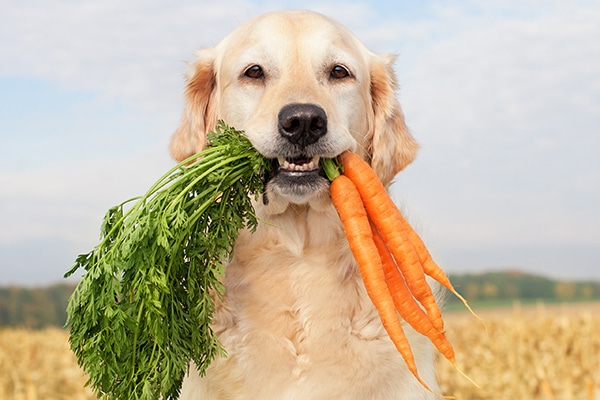 From: DogSter.com
From: DogSter.com
#10 Carrots- Stockpile Their Vitamin A
This orange, cruciferous vegetable is healthy for most all mammals.
The root grows bright orange (boasting significant beta carotene content).
With benefits to the eyes and cognitive system (as well as the liver), what dog could resist this crunchy treat.
That said, the raw carrot can be challenging to digest.
Consider providing this in juice form on a hot day.
Learn: What Is The Difference Between Small Breed Dog Food and Regular?
#11 Cashews- A Pup-Friendly Legume
While some nuts may be dangerous for dogs to eat, cashews are technically a legume and not a part of the nut family.
They provide healthy fats that facilitate a strong and shiny coat (as well as mental benefits).
Since they are so high in fat, they are also high in calories.
Make sure not to overdo it on these ever-so-rich treats.
 From: MyPawsitivelyPets.com
From: MyPawsitivelyPets.com
#12 Cauliflower- Crunchy for Cardio Health
Cauliflower, like Brussel sprouts, is also related to broccoli.
It boasts significant antioxidant abilities and is a very versatile food.
With high mineral content and low starch, it is a sensible addition to your pup’s food cycle.
Consider blanching the item and breaking it into pieces in the kibble.
When it is smaller, it is easier to digest.
#13 Celery- A Low-Calorie Snack
As us pup parents know, doggy diets can be fairly unpredictable.
Celery is one of those food items, since for canines it acts as an effective diuretic (meaning it makes them urinate more frequently).
While this may not be pleasant for the pup, there is a time and a place for everything.
Consider celery juice or soup if your dog has a urinary tract infection.
It will help process out sickness when the dog is fighting an illness.
Peoples may also know: Should I Feed My Pitbull Large Breed Food?
#14 Cucumber- Fresh for your Furball
This snack is safe, though how much your dog takes to the crunchy treat very much depends on their taste buds.
Since it is low in calories and low in sodium, it can be issued as a treat for dogs looking to lose weight.
Consider adding some broth powder to the top to act as tasty electrolytes on a hot day. Cucumber provides a great source of hydration.
#15 Cheese- A Tasty Source of Calcium
There are conflicting opinions on whether or not to feed cheese to pups.
That said, our dogs adore this food.
Of course, issue it in moderation.
Since it is such a powerful flavor, consider giving cheese on its own as a training treat.
Note, however, that the food can lead to constipation so make sure your dog drinks plenty of water.
It is high in calcium but also in salt, the water will help with this as well.
#16 Citrus- Sour and Sweet Simultaneously
Naturally, citrus contains citric acid.
This is in addition to high contents of ascorbic acid (Vitamin C).
If your pup is prone to heartburn, then this is not the food for them.
Keep an eye out or acid wear on teeth.
That said, the food itself reduces bad breath and can lead to some funny reactions.
While not a suitable staple, this makes a fun treat and an effective breath mint.
Squeeze a few drops into the pup’s water dish for improved dental smell.
You may also read: What Is The Best Dog Food For Schnauzers?
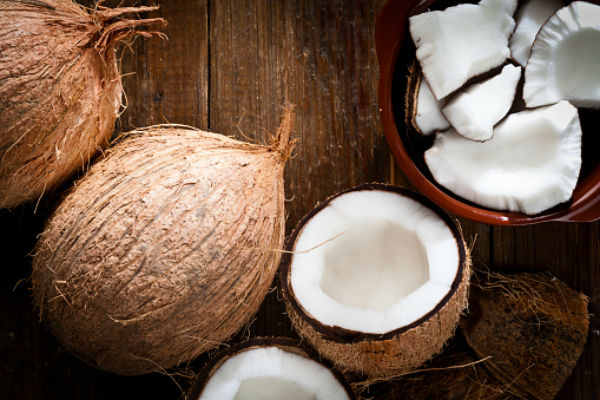 From: AKC.org
From: AKC.org
#17 Coconut and Coconut Oil- A Unique Bone Alternative
The flesh of the coconut is highly fibrous and can provide an interesting challenge to chew down (much like a bone).
Note, nonetheless, that coconut is high in saturated fats and mid range triglycerides which can cause tummy trouble.
Provided you issue this food sparingly, it is a great way to incorporate fibre into the diet.
Consider giving the food raw and plain.
 From: Can-Dogs-Eat.com
From: Can-Dogs-Eat.com
#18 Cooked Chicken- An Excellent Meat Protein
Cooked chicken (provided your dog tolerates the food well) is one of the most versatile ingredients in the canine diet.
Whether you serve it plain, incorporated into the kibble or wet food, or dehydrated as a jerky, the pure protein is sure to be successful.
Consider boiled morsels as a low-fat protein supplement to ensure proper muscle mass.
 From: DogsFud.com
From: DogsFud.com
#19 Cooked Oatmeal- A Filling Carbohydrate
This extremely healthy grain has been popular throughout time.
When we cook oatmeal, one thing we know is that we will stay full for quite some time.
This trick applies to dogs as well.
While it may seem unusual, this works as a weight loss food for overweight pups.
It is a healthy meal that keeps them full, preventing overeating of riskier options.
Serve it plain, with a small amount of bouillon to keep things interesting.
Peoples may also know: What Food Is Good For Poodles?
#20 Cranberries- Great for Kidney Health
Whether you prefer dried or fresh cranberry, it is safe to serve to your furry friends.
Consider these if your pup is having either kidney or urinary tract issues, since the natural properties work against such ailments.
Keep in mind that raw cranberries, while safe to eat, are also very tart.
Dried cranberries boast the same benefits, without the unpleasant sourness associated with this fruit.
#21 Eggs- Fine Minerals and a Fine Snack
Protein, cholesterol, and trace minerals constitute the healthful causes of these wonderful foods.
Whether you include them cooked or raw, this item is a great source of all-around benefits to the doggy body.
Personally, we like to crack a raw egg into the kibble and mix it in for an interesting texture.
This provides a healthy coat and an extra level of caloric energy to the pup.
#22 Green Beans- A Glorious Source of Amino Acids
Assuming that, when you give your pup green beans, they are plain, they make a great, healthy addition to the diet.
High in fibre, calcium, magnesium (and even trace selenium), these vegetables are a great powerhouse of potent minerals.
In addition to these values, this crunchy food offers amino acids necessary to forming proteins.
It is imperative to note that this food, on its own, is not a complete protein and we should not use it as such.
You may also read: What Foods Can You Feed Frenchies?
#23 Green Peas- Ideal Fibre Served in Moderation
In terms of trace, beneficial ingredients, peas stand out from the crowd.
They hold a great deal of B Complex vitamins, as well as Vitamin K which is essential for the pup’s clotting mechanism.
The food has a reasonably mild taste, so it blends well with kibble or wet food.
It is not a suitable dietary staple or protein replacement, since trace amounts of theobromine (the dangerous chemical in chocolate) are also present in peas.
#24 Ham- A Salty Snack for Hot Days
The clear benefit of this food is protein.
Since it is meat (sourced from pork) we know that it is a complete protein- full of all the essential amino acids.
That said, it is also extremely high in sodium.
Unlike people, dogs can’t sweat out their salt.
Keep this in mind, and always feed ham with a lot of water (and ensure it is a treat, not a regular meal).
 From: DogCarion.com
From: DogCarion.com
#25 Honey- Helps Via Antibiotic Properties
You can serve honey to your pup.
It has antibiotic features that make it suitable for certain occasions.
Aside from B Vitamins, however, the key item that composes this food is a type of sugar.
While not as problematic as processed white sugar, it does have the ability to spike blood sugar (leading to a crash).
Consider this item as a treat if your dog is under the winter weather or suffering from a sore throat.
You may also like: What Should American Bulldogs Eat?
 From: AKC.org
From: AKC.org
#26 Lettuce- Crisp and Crunchy for Occasional Munching
While dogs technically can eat lettuce, it does not necessarily mean that they will enjoy the food.
Overweight dogs see the most benefit, since it is so low in calories.
Another reason we love this option is that it is a crunchy access point to hydration.
Consider these leafy greens when out on a long summer walk.
Personally, I like to add protein with the fibre for balance and flavor.
It makes the pup more likely to eat this healthy morsel.
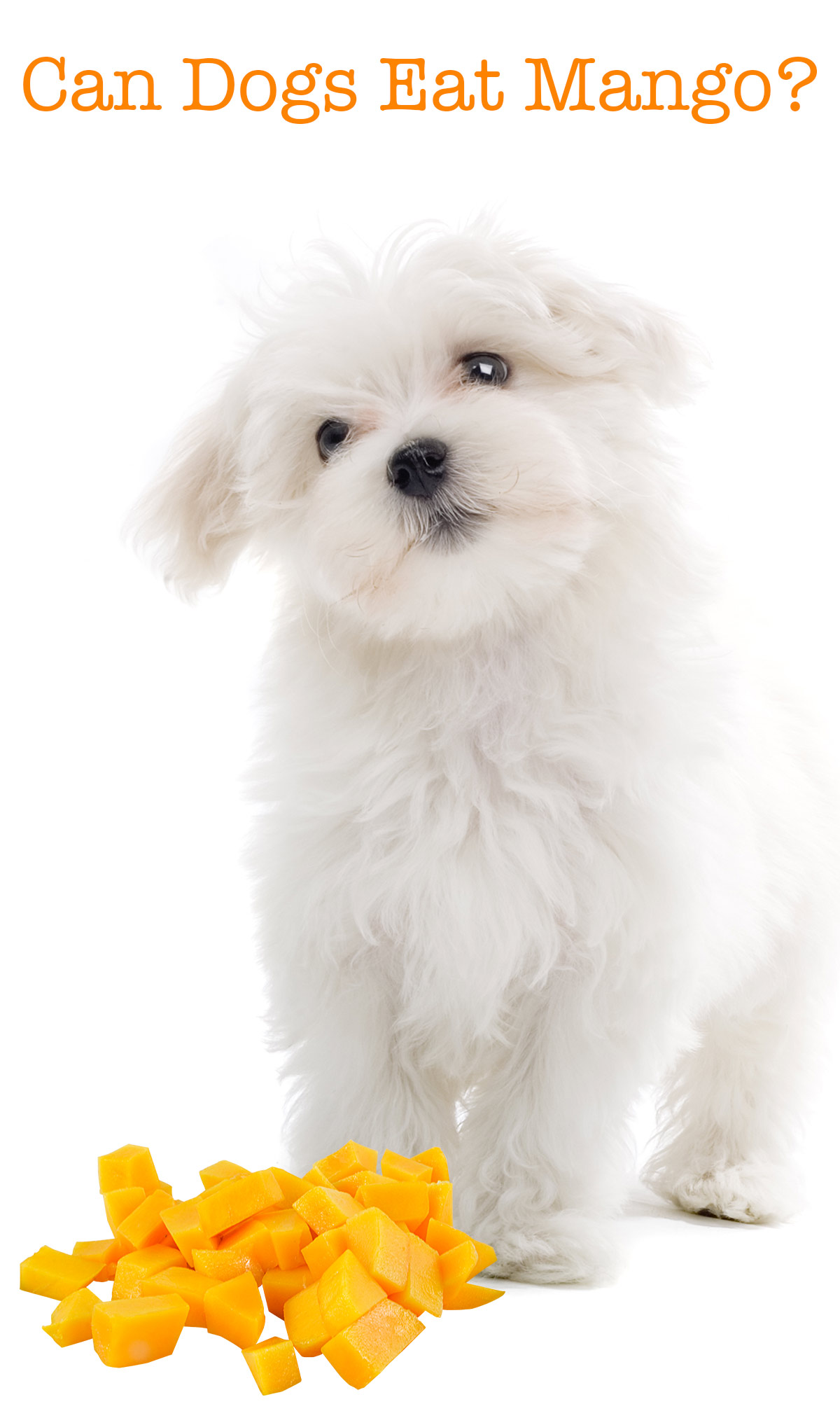 From: TheLabradorSite.com
From: TheLabradorSite.com
#27 Mango- Flavorful and Fruity Flesh
The mango’s flesh is perfectly fine for the pup to eat.
It boasts a plethora of vitamins and healthy sugars, making it a great treat for warm days.
That said, not all parts are safe.
The pit and the skins both contain chemicals which are dangerous to consume (for people and dogs alike).
In order to keep your dog safe, peel the mango thoroughly, and do not run the risk of giving them the pit.
Related reading: Can Dogs Eat Mangoes?
#28 Oranges
It is probably no shock that oranges are fine for a dog to eat.
The whole world knows the clear and apparent benefits (sailors and scurvy being a much-espoused tale).
From Vitamin C to fibre, to accessible fructose, this food is a powerhouse of value.
That said, it is unlikely that your canine will chomp down on the fruit itself.
As such, consider juicing the item and adding small bits to the water dish for flavor.
#29 Pears- A Puree for Picky Pup Palettes
Dogs are fine eating pears on occasion.
There is no component of this food which is particularly harmful to the pup.
That said, as with any fruit or vegetable, too much can trouble the stomach and digestive process.
Since it is so high in fibre, the benefits are mostly for pups on raw meat diets.
If you are feeding this item, consider a puree added to the meal.
 From: WideOpenPets.com
From: WideOpenPets.com
#30 Peanut & Peanut Butter- A Salty Treat for Canines
Peanut butter is safe. However, safe doesn’t necessarily mean healthy.
While there is valuable protein (not complete) and healthy fats in the food, it is also very high in calories.
The food doesn’t suit dogs who are overweight or prone to same.
For a treat, though, try dipping a difficult-to-feed food in peanut butter.
Your pup is sure to enjoy this treat option.
Related reading: Is Butter Bad For Dogs?
#31 Pineapple- A Tart but Safe Pet Treat
This tart treat is perfectly safe for dogs; however, if your pup shows signs of gastric distress, then it is better to look elsewhere.
Try pineapple in a small amount when first feeding it to your canine companion.
You will get an idea of their taste preferences (as well as any tummy troubles) within the first few hours.
Dice the item and add it in with other foods for easy feeding.
#32 Popcorn- A Source of Surprising Dental Benefits
Corn is a conflicting food product. In bulk it has the ability to spike blood sugar and bog down the dog’s system.
Popcorn is slightly different.
The food itself works as a good abrasive agent for tartar buildup on the dog’s teeth.
Keep this in mind for pups that are difficult to brush or have dental issues.
It can also work for weight loss, given you issue it in moderate servings.
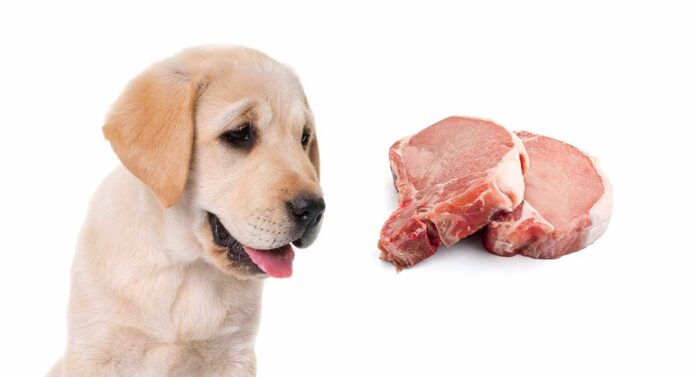 From: TheLabradorSite.com
From: TheLabradorSite.com
#33 Pork- A Powerhouse Protein
Meat is a great go-to for dogs. Depending on their taste preferences, pork is a very acceptable option.
When serving, keep in mind what cut you choose.
Certain parts of the pig are very high in fat (all saturated).
Keep your dog’s heart healthy by gearing towards trimmer slices of this ‘other white meat.
You may also like: What Is The Best Dog Food For Pomeranians?
#34 Pumpkin- Great for Eye Health
Though there are tonnes of valuable benefits of this healthy gourd, we favor it due to the high content of Vitamin A.
Unlike many other fruits that have this ingredient, pumpkin tends towards easy digestion.
This makes it easy for us worried pup-parents to supplement for eye health.
Consider pumpkin puree for dog breeds that are prone to ophthalmic health issues.
 From: PetConsider.com
From: PetConsider.com
#35 Quinoa- A Complete Vegan Protein
While most veterinarians will recommend against a vegetarian diet for dogs, if you prefer to include a lot of veggies in your pup’s diet, it is important to know which of them are complete proteins.
Quinoa is a great option for this; however, since it is so high in fibre, it is better to start out slow.
Include boiled quinoa in with wet food to add bulk to the meal.
It will quickly let you know if your dog takes to this item.
#36 Raspberries- Sweet, Vitamin Packed Morsels
All healthy foods come with a list of pros and cons for canine consumption.
Berries are no different.
Raspberries have high amounts of copper and folic acid, and generally provide a filling experience that lasts a few hours.
That said, they are also really high in fructose, meaning the energy will couple with a crash.
Provide these simple morsels in moderation as a healthy alternative to a salty snack.
You may also know: What Do You Feed A Picky Dog?
#37 Red Tomatoes- Ideal for Heart Health
Lycopene is an often-forgotten food component that helps with cardiovascular wellbeing.
It is not found in many foods, though tomatoes contain it in spades.
Consider small portions since red tomatoes can lead to tummy upset.
Generally, the benefits outweigh the downfalls and you can serve this item along with other meals.
Mix the puree into kibble or wet food for a healthy supplement.
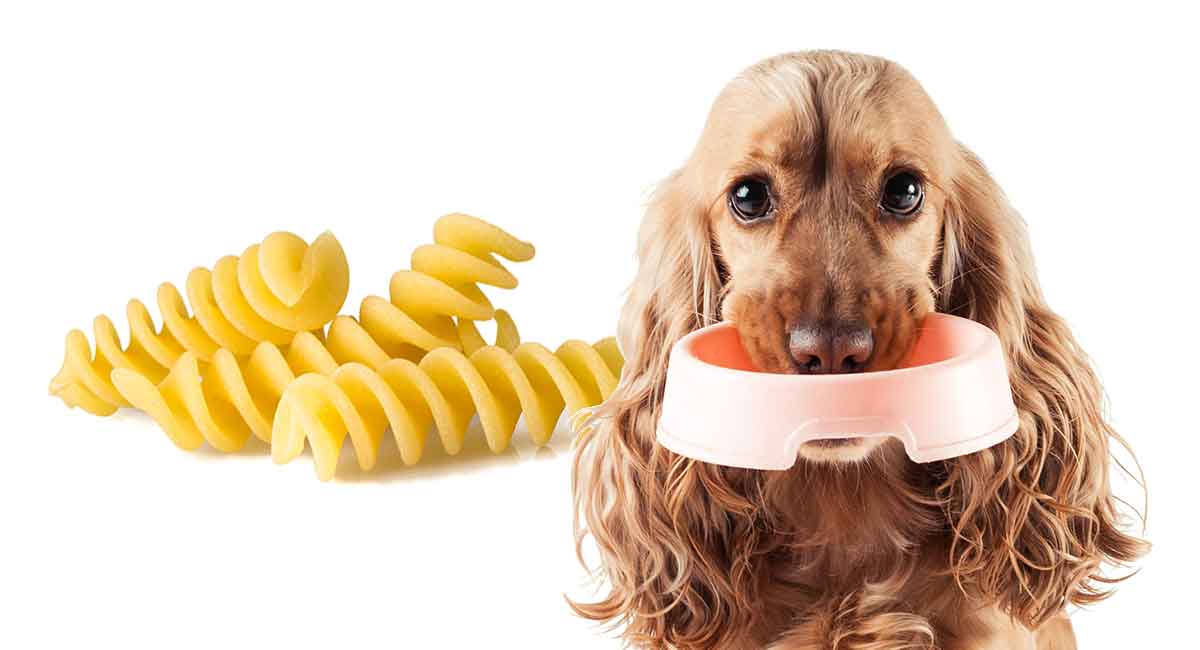 From: TheHappyPuppySite.com
From: TheHappyPuppySite.com
#38 Rice & Pasta- Grains and Glory
With any carbohydrates, such as rice and pasta, it is better to seek out whole grains.
Choose brown rice and whole grain pastas when feeding these items.
We all know that protein should make most of the doggy diet.
That said, the energy provided from this food is priceless.
Add cooked pasta and rice in with other food as a high-calorie supplement.
Related reading: Can I Feed My Dog Rice Everyday?
#39 Salmon- Plenty of Healthy Unsaturated Fats
Chances are, you have heard about the benefits of omega fatty acids.
You have likely also heard about the draws of unsaturated fats.
Salmon, thankfully, has both of these items in plenty.
Provide your pup with a healthy mind and shiny coat by incorporating salmon.
Whether cooked or raw, this food is sure to put a smile on your pup’s face.
Consider giving small, cooked morsels as a treat.
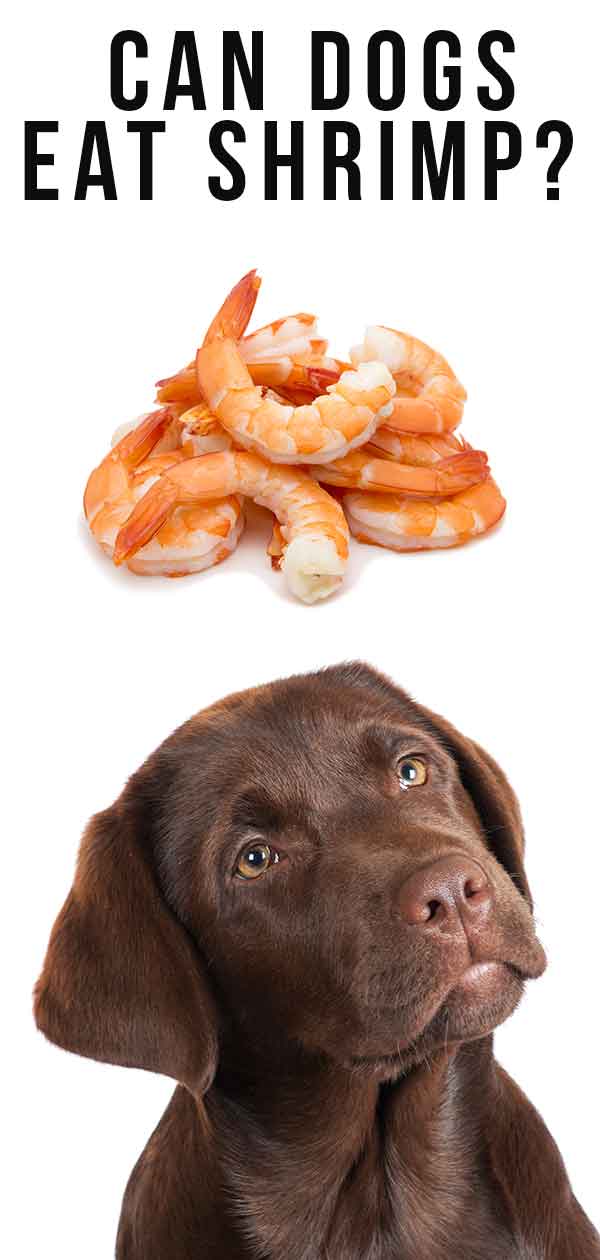 From: TheLabradorSite.com
From: TheLabradorSite.com
#40 Shrimp- High in Iodine, in Moderation Fine
Shrimp are a safe choice for dogs to eat.
That said, only feed them once you have thoroughly cooked shellfish.
We can add them to lower grade dog food as a healthy supplement.
Keep in mind that this item has a great deal of iodine which can speed up thyroid function.
If your dog is underweight, find a different seafood choice.
#41 Spinach- Leafy Greens for Healthy Blood Oxygen
Iron, calcium, magnesium, and Vitamin K are all major benefits of this healthy, leafy green.
Consider adding this to an anaemic dog’s diet.
When your pup’s kibble doesn’t contain vegetables, spinach is a suitable addition to the kibble.
Thaw frozen spinach and incorporate it into the dog’s regular meals.
A little bit goes a long way and keeps your dog full longer.
You may also know: What Makes Large Breed Dog Food Different?

#42 Strawberries- Shocking Dental Whiteners
A hidden benefit of strawberries is great dentistry.
There is a chemical inside the seeds of this fine berry which whitens enamel.
It also contributes to improved doggy breath.
Since they are so naturally high in sugar, it is better to serve these berries in moderation.
Slice them before adding the item to your dog’s dish.
It brings out the sugar and stretches the benefits of this tasty morsel.

#43 Sweet Potatoes- Healthy for Eyes yet High in Carbs
Your dog’s weight is a major factor in how much benefit they will see from this foodstuff.
Since these tubers are mostly starch, if your dog is overweight, it is better to use carrots as a source of Vitamin A.
If your dog is high energy and exercises often, then the benefits are clear.
Try boiling and pureeing the vegetables before mixing it in with the kibble.
As with all other starches, serve this item in moderation.

#44 Tuna- Great When Served in Moderation
No matter the mammal, we are all sensitive to the risks of mercury poisoning.
Our systems cannot process this liquid metal, which leads to eventual brain damage in large quantities.
Provided you serve tuna sparingly, the values of low-fat protein are clear.
Consider this as a stand-alone item for midday meals.
It is best when eaten after exerting exercise since your pup absorbs protein best at this time.
Peoples also read: What Food Should I Feed My Great Dane?
#45 Turkey- A Temperament Terrific Meat Source
Energizing white meat protein meets the amino acid tryptophan in this fun flavored food.
Dogs like it because of the unique taste.
Pet parents adore this option since it is great for temperament and energy.
Though the item is usually seasonal, consider freezing some after the holiday dinner.
We can dole it out in small portions to ensure that your dog has the correct amount of this necessary amino acid.
#46 Watermelon- Lycopene for Healthy Hearts
Great benefits of watermelon are apparent in warmer seasons.
Consider this food if you worry that your pup is not getting enough hydration.
Watermelon is loaded with fibre, water, and heart-healthy lycopene.
The food is great as a crunchy standalone.
The sugar will keep your pup interested and the hydration will keep you happy.
That said, it does cause frequent urination so ensure your pup has easy access to the bathroom.
 From: PuppyFAQs.com
From: PuppyFAQs.com
#47 Yogurt- Packed with Probiotics
This is a favorite option for dogs with sensitive stomachs.
Probiotics feature in many kibbles; however, if they are not, we need to source them somehow.
As a supplement, it can be a challenge to administer.
In the form of yogurt, however, dogs are typically agreeable.
Mix in a spoonful with the kibble for a unique flavor experience.
You may also know: What Is The Best Dog Food For American Bully?
#48 Zucchini- A Simple, Reduced Carb Squash
For this squash, cooked is better than raw.
The starchy components make the item filling and its low smell and taste makes it amenable to even the pickiest pup.
It is a low starch option to source carbohydrates.
Stew the item in some water and puree it before mixing the food into the kibble.
This works to keep your dog full throughout the day, so consider it with morning feedings.
Human Foods That Your Dog Can’t Eat
Now that we have investigated all the healthy human foods that dogs can eat; we must look at the unsafe food counterparts.
Sometimes, danger is unassuming. It is critical that we know what is safe and what isn’t.
In this way, we do the best we can to show our love and affection to our furry family members.
#1 Alcohol and Products Containing Alcohol- Always a Danger
Most likely, it goes without saying that canines cannot drink alcohol.
Not only is it unhealthy, it is plain dangerous.
It reduces oxygen flow to the brain and leads to liver issues in the canine form.
If your dog has accidentally consumed alcohol, contact poison control and your family’s veterinarian immediately.
You may also like: Do You Know Which Dog Foods Best For German Shepherds?

#2 Avocado- Persin’s Just for Persons
Dogs are very susceptible to harm from Persin.
This toxic chemical is a fungicide which damages the canine form.
In extreme cases (such as a sensitive doggy constitution), the toxin can lead to fatality.
Even in small amounts, this will lead to stomach upset such as diarrhea.
Steer clear of all fruits containing this chemical.
#3 Candy- Excessive Sugar and Additives
Candy is mostly just sugar and chemical flavoring.
We put so much effort into ensuring that our doggy diets are free of additives that it makes no sense to give them candy.
The primary issue relates to the dog’s pancreatic function.
Candy consumption causes a spike in insulin.
If this occurs regularly, it sets the dog up for diabetes down the road.
#4 Chewing Gum- Sugar-Free is Doggy Danger
The problem with chewing gum isn’t necessarily the ‘gum’ so much as it is the additives.
Sweetening agents (especially xylitol) are frequently found in gum- since it avoids sugar for human teeth.
That said, the canine system cannot process this ingredient and will see toxic effects.
Avoid chewing gum altogether for dogs.
If your pup consumes this matter, keep a close eye on them.
If there are issues, call your vet.
You may also read: What Is The Best Food To Feed Corgis?

#5 Chives- An Overload of Sulphur
Even if your dog has a tough constitution, they are still vulnerable to poisoning from plants in the Allium family.
These include onions and garlic as well.
Trace chemicals found in these foods makes them a high risk for dogs.
Avoid using these items to spice any food for canines.
Stomach upset can present up to a few hours after consuming the food.
Be wary of any food that contains even trace amounts of chives.
#6 Chocolate- A Well-Known Puppy Problem
In chocolate, theobromine is the culprit. Ironically, in humans, this induces a state of calm.
In dogs, however, it leads to intensive gastric distress.
In small amounts, the chemical causes vomiting and diarrhea.
In larger quantities it leads to intestinal bleeding and issues as severe as death.
When it comes to chocolate, sugar is not the issue.
Avoid cacao altogether.

#7 Cinnamon- A Risk Not Worth Taking
Though cinnamon, on its own, is not unsafe for dogs, it is similar in taste to nutmeg (which can be dangerous).
Often, spice blends will include both items to add flavor.
Cinnamon itself can regulate blood sugar and adds sweetness without sucrose.
That said, the risk from similar spices is too high, and it is best to avoid cinnamon altogether when flavoring your dog’s dinner.
Peoples may also read: What Is The Best Dog Food For Border Collies?
#8 Corn- A Troublesome Bulking Agent
For many years, corn was a staple in the doggy diet.
It was found in just about every kibble as a bulking agent.
Thankfully, we now know better.
This food is high in fructose (being the key ingredient in high fructose corn syrup).
It adds no value and actively harms the sugar/insulin balance in your canine.
Avoid corn altogether- especially processed corn products.
#9 Coffee, Tea & Other Caffeine- An Unpleasant Stimulant
Caffeine is a drug, albeit a very common one.
It does not suit the canine for a number of reasons.
Caffeine (even that found in tea) is both a diuretic and a stimulant.
The diuretic properties cause the dog to dehydrate.
The stimulant effect is harmful to the heart as well as the temperament.
Steer clear of caffeine containing materials.
 From: CanIGiveMyDog.com
From: CanIGiveMyDog.com
#10 Fat Trimmings- Excessive Saturated Fat
Any fat that is solid at room temperature is a saturated fat.
These are physically more difficult for the dog’s system to break down, thereby adding stress to the pup’s heart.
Even though most (if not all) dogs favor fat trimmings, it does not make them healthy.
Instead of meat fats, stick to polyunsaturated fats like those found in cashews.
You may also like: What Is The Best Thing To Feed An Older Senior Dog?
#11 Flour and Yeast Dough- Common Canine Irritants
Yeast infections affect dogs as well as humans.
Since their systems did not evolve eating this foodstuff, it is better to avoid the ingredient altogether.
Flour (especially that from wheat) contains material that harms digestive tracts- things like glutamic acid.
Avoid these to keep your dog free of dietary intolerances.
At best, there is no nutritive value.
At worst, these problem ingredients lead to yeast infections and bleeding of intestines.

#12 Grapes- A Mysterious Canine Concern
Nutritive science has come a long way, even over the past decade.
We now know that it is detrimental to the pup to eat grapes (or raisins, their dried counterparts).
While we do not yet know what ingredient in the grapes is specifically toxic, empirical evidence shows us that they are, in fact, fatally dangerous.
The poisoning mechanism is renal, meaning they lead to shutdown of the kidneys.

#13 Garlic- The Biggest Allium Family Culprit
The cause of danger in this potent food is sulphur compounds.
While all creatures need trace amounts of this mineral to live, the intensity of presence in garlic far exceeds the needs of the dog.
Symptoms of detriment can delay as much as a few days.
While cooked garlic is safer than raw counterparts, it is important to avoid the food altogether to keep your pup safe.
Peoples may also read: What Foods Are Best For Great Pyrenees Dog?
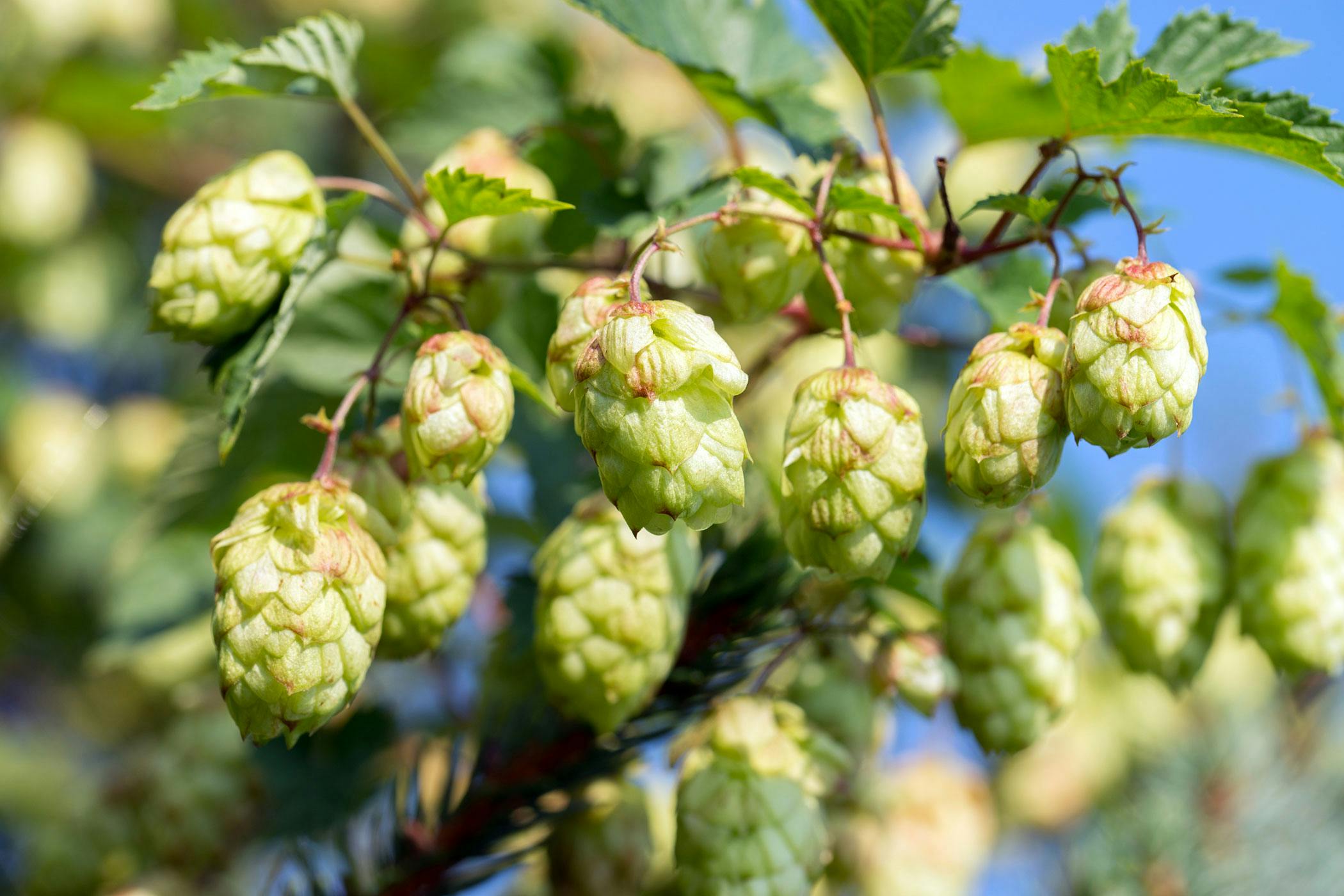
#14 Hops- Will Not Make a Dog Happy
It is important to note that hops are only dangerous to some dog breeds.
That said, since many dogs are mixed breeds, genetic predisposition to intolerance is effectively a wild card.
It is better that you avoid this food for your dog, just to be on the safe side.
The problems arise in the form of hyperthermia (overheating).
It shows up as accelerated heartrate and vomiting, as well as panic.
If you suspect this condition, contact a vet right away.
#15 Human Vitamins and Supplements- Too Much of a Good Thing
Trace necessities for vitamins and minerals is just that, a trace requirement.
Since the metabolic function of humans and canines differs significantly, the ratio of ingredients is far off balance.
We would not benefit from a doggy vitamin, and they will not benefit from ours.
At best, it would cause stomach upset.
At worse, poisoning to the liver and kidneys as a result of excess ingredients.
#16 Ice Cream- An Excess of Dairy and Sugar
If your dog has a predisposition to issues like allergies and diabetes, then avoiding ice cream is critical.
Should you be a lucky pet-parent with a healthy pup, providing this sweet treat sets them up for failure.
There is no nutritional benefit and far too much risk.
The foodstuff is high in sugar, saturated fat, and lactose.
All of these items, when consumed over time, add risk factors for the above noted disorders.
You may learn: Do English Bulldogs Need Special Food?
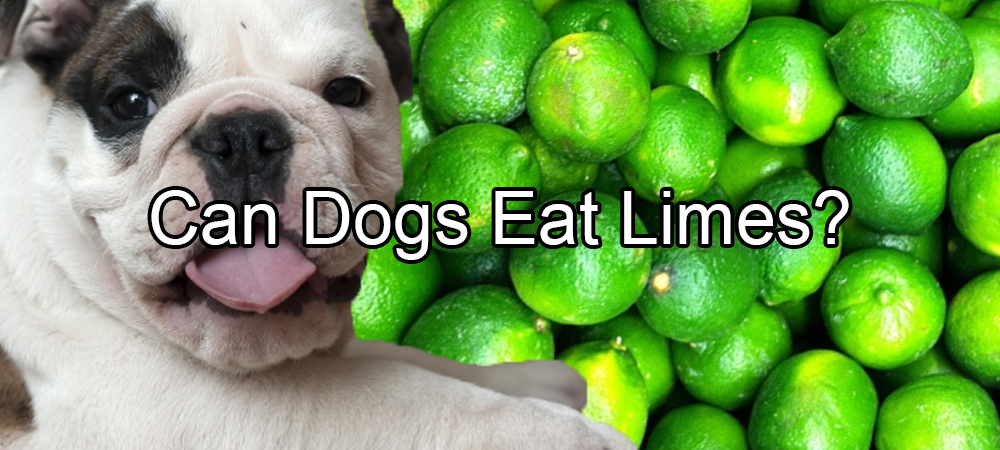
#17 Lemons & Limes- Limes are Lethal
Lemons themselves are not harmful.
Limes, however, are poisonous in all parts.
Whether it is the flesh or the peel (or the less-seen leaves), this food is toxic to canines.
Chemicals called psoralens which are present in large amounts in the lime are the source of this danger.
Dogs will generally avoid this food, since off-putting taste is an evolved reflex to consume only safe food.
Do not add this to the dog diet, or multi-system failure can result.
Related reading: Can Dogs Eat Limes?
#18 Leeks- Another Source of Sulphur Problems
Leeks are of the same family as onions and garlic.
While they are a less potent option, the reduced presence of sulphur arguably makes them riskier.
Since it has a muted flavor, dogs don’t avoid them as readily.
It is up to us to keep their systems safe from dangerous sulphur compounds.
Do so by avoiding leeks along with all other members of the Allium plant family.
#19 Liver- The Great Bio-magnifying Organ
Liver is a bio-magnifying agent.
This means that the higher we get on the food chain, the higher concentration of toxins we find.
Anything that is fat soluble stores up in the hepatic system of any animal.
This means that problem ingredients like mercury (or worse, pathogens) accrue in this organ; so, when the dog eats them, they too absorb this matter.
Steer clear of this organ and focus on muscle proteins when feeding.

#20 Macadamia Nuts- Poisonous to All Dogs
Some canine cooking is controversial.
We can argue the actual benefits and detriments of many foods, but macadamia nuts are not one of them.
These nuts are poisonous to all dogs.
Science shows us that these fatty morsels cause everything from weakness to fever, tremors to depression.
Canines are the only species in which this issue presents.
While the food may seem high-end, it is nothing but trouble for our furry friends.
You may also know: What Should You Feed Your Dachshund?
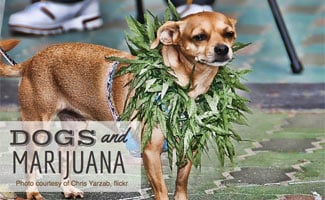 From: CanineJournal.com
From: CanineJournal.com
#21 Marijuana- A Dangerous Drug for Dogs
Though some see marijuana as a medical compound, it has adverse effects on many canines.
Cannabis is a psychoactive chemical.
This means it fundamentally alters the base state of the puppy’s mind.
While humans may be able to understand the situation, canines cannot.
This leads to temperamental issues (everything from panic to rage).
It can also cause vomiting and diarrhea.
Unless explicitly told by a vet, avoid this chemical for your canine.
#22 Milk and Dairy- The Canine Contrary Couple
Just like people, a lot of dogs are lactose intolerant.
The trouble is that we don’t know they have this issue until it presents (usually in the form of runny stool).
Since there are so many other viable sources of protein, it is best to steer clear of these animal by-products.
At best, cheese can constipate and dehydrate (caseinate and salt).
At worst they cause actual intestinal problems and furthered stomach sensitivities.
 From: AllDogsWorld.com
From: AllDogsWorld.com
#23 Mint- Simple yet Deceivingly Dangerous
The good news is that not all mint is toxic to dogs.
The bad news is that the subspecies., English Pennyroyal (Mentha Pulegium) is very toxic.
Unless you are an experienced herbalist, it is better to avoid mint altogether.
Problems arise in the form of vomiting and diarrhea.
While a few leaves don’t cause issues, we like to stay on the safe side and avoid this plant altogether.
Peoples may also read: What Is The Best Dog Food For Maltipoo?
#24 Nutmeg- Never a Wise Choice for Dogs
The mystery ingredient in nutmeg is actually called myristicin- and it is very toxic to dogs.
Generally speaking, your dog needs to eat a lot of nutmeg in order to see these effects.
That said, it is best to avoid this ingredient altogether.
It is the most dangerous when your pup finds spilled nutmeg.
If this is a concern for your family, consider purchasing whole nutmeg instead of powdered.
It is harder for the dog to consume and avoids this common pitfall.
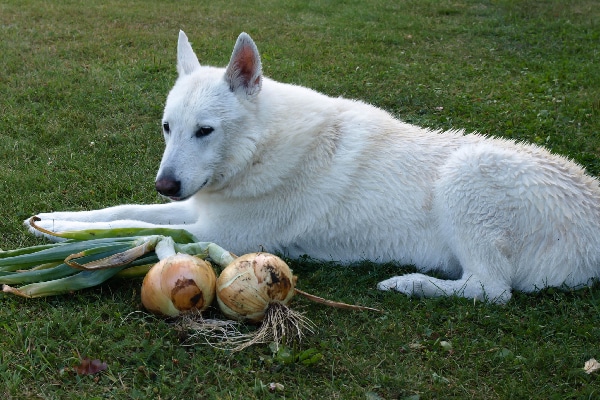 From: DogSter.com
From: DogSter.com
#25 Onion and Onion Powder
We cannot emphasize enough the importance of your furry friends avoiding the Allium plant family.
The sulphur compounds contained therein are potentially fatal.
Of course, it is unlikely that your dog will chew down a whole onion.
That said, our furry friends adore human treats.
If you want to give your pup scraps, make sure that they do not contain onion or garlic (common additives in snacks).
#26 Pepperoni- Problematic for Pups
Capsicum is a fascinating ingredient.
When it is in powdered form, it is entirely unassuming.
That said, the ingredient, upon contact with water, turns into a fairly strong acid.
This is detrimental to your dog’s digestive tract.
We have all experienced heartburn; so, as dedicated pup parents, it makes sense that we want to save our furry friends from this troublesome experience.
To do so, avoid pepperoni (and the painful burps it brings).
Learn more: What Foods Cause Acid Reflux?
 From: SmartDogOwners.com
From: SmartDogOwners.com
#27 Peppers- Stomach Troubles Waiting to Happen
Some foods are not toxic, yet they still do not agree with dogs at all.
Peppers are one of those foods. Bell peppers (unlike many other pepper varieties) are fairly low in capsicum.
That said, they still cause canine digestive upset.
These problems include diarrhea, and often, vomiting as well.
Green peppers seem to be the more common culprit, though other bell peppers pose an issue as well.
Steer clear of these crunchy veggies for best health practices.
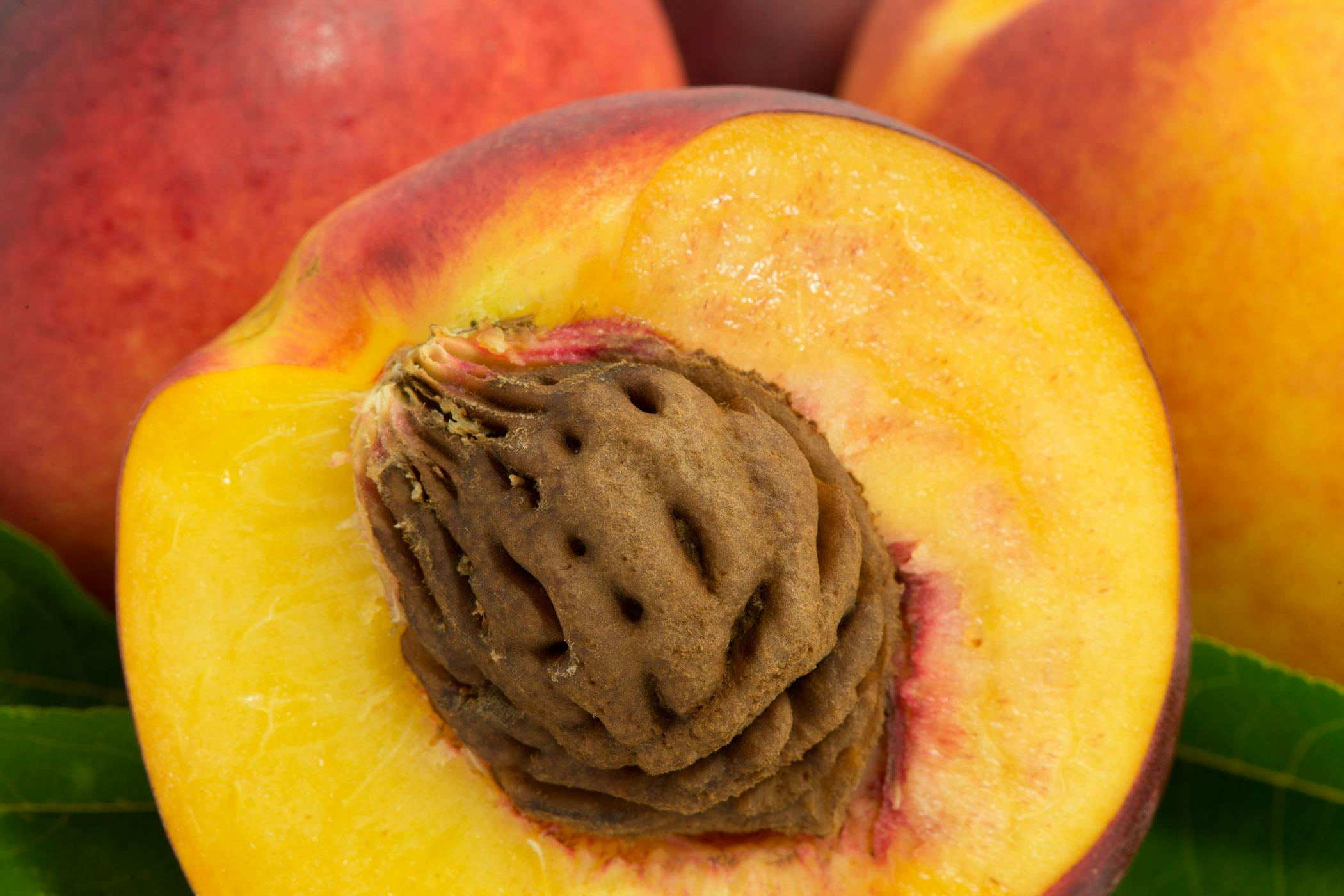
#28 Persimmon, Peach & Plum Pits- Surprisingly Dangerous and Require Caution
Unlike the peppers we just mentioned, pits from these fruit actually are toxic.
This is thanks to a chemical called amygdalin.
Poisoning from this substance is severe and can lead to fatality.
While the flesh of these fruits is perfectly safe, the pits are the source of danger.
Beware of your dog eating scraps, and exercise caution if they ever break into the trash. Another noteworthy risk is cosmetic products.
Dogs like to test boundaries (even by eating our beauty products).
Ensure that you store these items safely.
#29 Pickles- Overly Salty for Our Furry Friends
The danger posed here is twofold.
In terms of dietary risk, pickles contain an insane amount of salt.
Hypernatremia is a real risk that results from underhydration and excessive consumption of sodium.
Another problem is the apparent choking risk.
Have you ever noticed that the width of a pickle is the same as that of a trachea?
Your dog likely didn’t.
Keep them safe by avoiding this troublesome food.
You may also know: What Food Should You Feed Your Doberman?
#30 Potato Chips- Empty Calories Causing Weight Gain
From sodium to empty calories, there is little to no benefit to your dog eating potato chips.
It is best to avoid these crunchy bits and instead give meat jerky or other tasty morsels.
While potatoes on their own are not usually harmful, there is a risk associated.
A major concern is the empty starch (void of most fibre).
Just like with people, chips cause bloating and eventual weight gain.
 From: PupHow.com
From: PupHow.com
#31 Pretzels- Too Many Complex Carbs
Dogs can only eat so much in a day.
It is important to their overall health that we make every calorie count.
This means avoiding foods that serve only to add bulk.
Pretzels are, most often, made out of wheat.
This ingredient leads to sensitivities in an alarming number of canines.
Avoid risks of intestinal bleeding and diarrhea by steering away of filler foods like pretzels.
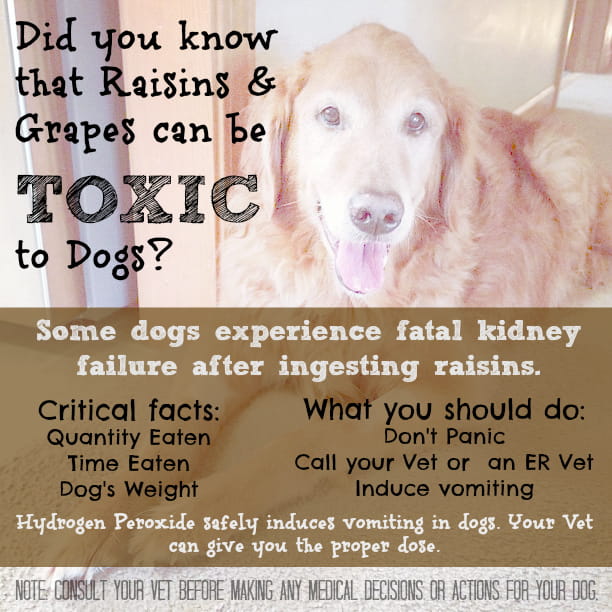
#32 Raisins- A Mysterious Canine Poison
Some parts of nutritional science remain a mystery.
Even though we do not yet know the actual chemical in grapes and raisins that causes harm to dogs, it is best to avoid them.
There are countless recorded incidents of damage to dogs resulting from this inconspicuous food.
Instead of feeding these to your dog and causing issues ranging from weakness to diarrhea to death, consider dried cranberries.
They taste similar and pose no risk to the dog.
Learn: What Is The Difference Between Giant Breed Dog Food and Regular?

#33 Raw/Undercooked Meat, Eggs and Bones- A Pathogenic Risk
The raw meat diet for dogs gained a lot of traction over the last few years.
We know that dogs evolved eating raw meat and want to bring them back to their roots.
That said, even the strongest constitutions are vulnerable to e-coli and listeriosis.
Raw meat (especially if not stored and butchered properly) holds a lot of these pathogens on the surface and beneath.
It is critical to the dog’s health to avoid these troublesome bacteria.
At best, their stomach will be troubled; and, at worst, issues like hemolytic uremia syndrome present.
#34 Rhubarb & Tomato Leaves- Danger to Dogs and Humans Alike
The risks posed by these items is critical to remember; since, not only is it dangerous to the dog, but also to the human caretaker.
While the leaves are not typically eaten, the risk is present in gardens or out on walks.
Make sure that your curious dog does not consume these leafy greens. They lead to vomiting and nausea.
#35 Salt and Salty Snack Foods- Hypernatremia Becomes a Canine Concern
Humans sweat through our pores (which are found on just about every square inch of our epidermis).
Dogs are not so lucky.
They have a much more challenging time riding their bodies of salt.
While sodium is a necessary electrolyte, that is only true in small amounts.
Larger quantities pose the risk of damage to the sodium-potassium pump.
Avoid this pitfall by steering clear of high salt foods.
You may also know: What Is The Best Dog Food For Labrador?

#36 Tobacco- A Problem for People and Pups
Everyone knows that tobacco potentiates disease.
This is true for humans and also for our canine companions.
Smaller scale problems include nausea and agitation.
Long term concerns include cancer and disease.
Even when it comes to second-hand smoke, dogs are vulnerable to tobacco.
Keep your furry friend far from these fumes to give them the best opportunity for a healthy life.
#37 Toothpaste & Mouthwash- Likely Contains Xylitol
Have you ever swallowed a small amount of toothpaste and gotten a small stomach-ache?
If so, then you have an idea of the problems this causes our pups.
Most of the issue is in the chemical xylitol.
Since the substance goes on our teeth, dentists veered away from sugar as a sweetener.
Now, this tricky chemical is used in its stead.
Basically, it is a sugar alcohol that leads to fatality in dogs.
#38 Wild Mushrooms- Tricky to Identify, Toxic to Mistake
Dogs are not alone in suffering the dangers of wild mushrooms.
Some mushrooms are safe- others are deadly.
Even the most trained human eye has trouble discerning the difference in many cases.
Dogs certainly cannot tell the deadly from the safe.
Alkaline chemicals found inside these small fungi pose an enormous threat.
Mechanisms of action vary from neurotoxicity to cardiac arrest.
Steer clear of wild mushrooms altogether.
You may also learn: What Is a Good Source Of Protein For Dogs?

#39 Xylitol (a sugar substitute)- A Severe Toxin To Canines
We spend so much time thinking that if it is natural, it must be healthy.
Doggy digestion certainly proves us wrong.
This sweetener is a naturally present berry alcohol that is often used as a sugar substitute.
Nonetheless, it is fatal to canines.
Check diligently for this ingredient on any food you plan to give to your pet pup.
Issues present in the form of lethargy, disorientation, fainting, and vomiting.
Early intervention is key to solving the problem.
Contact poison control immediately, followed by your vet.
Which Morsel Interested You The Most?
Now that we have investigated and analyzed healthy and dangerous doggy diets, was there anything that shocked you?
For me, it is critical to know what food is dangerous- especially since many seem so innocent.
Are there any foods you are planning to try?
Are there any you will avoid?
Let us know in the comments, we would love to learn from your pet-parent experience.
If you learned something from this article, share it along so other fur baby families can learn these tips and tricks to keeping their canine safe and healthy.
Other Dog Food-Related Topics
1. Can Dogs Eat Edamame?
2. Can Dogs Eat Chickpeas?
3. Can Dogs Eat Raw Or Cooked Lobsters, Shrimps, And Prawns?
4. 31 Dog Food Recipes With Eggs
5. Can Dogs Eat All Types Of Radishes? What You Need To Know!
6. Best Dog Foods For Labradoodles
7. Can Dogs Eat Sunflower Seeds?
8. 19 Instant Pot Dog Food Recipes You Can Make Easily
9. 33 Dog Food Recipes With Salmon
10. 24 Best Dog Water Fountains & Dispensers (For Indoors & Outdoors!)
11. How To Choose The Right Food For Your Dog? (18 Super Tips)
We have partnered with HungryBark.com to offer the best deal on high quality dog food to our readers. If you click on the button below, we will take you to their exclusive discount page.

